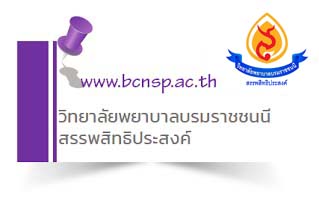Development and Evaluation of the Effectiveness of a Program Presenting a Model for Behavior Change in Drug Abstinence Among Patients with Amphetamine Dependence
Keywords:
patients with amphetamine dependence, behavior to drug abstinence, program presenting model on behavior changeAbstract
This study aimed to develop and evaluate the efficacy of a behavioral modification framework for amphetamine cessation in individuals diagnosed with amphetamine dependence. The research employed a comprehensive, 9-step research and development approach. This process included situational analysis, strategic planning, prototype development, content validation, preliminary testing on 10 subjects, prototype refinement, and effectiveness assessment. The latter phase utilized a quasi-experimental design, involving 28 inpatients at Phrasrimahaphodi Psychiatric Hospital, equally distributed between experimental and control groups. The study instruments were comprised of a demographic questionnaire, a drug cessation intention scale, the ASSIST-ATS, and a behavioral change model for substance abstinence. Data analysis incorporated various statistical methods, including descriptive statistics, chi-square tests, Fisher's exact tests, independent t-tests, and Mann-Whitney U-tests. The research culminated in the finalization of the program for healthcare implementation, followed by post-implementation evaluations and continuous improvements within the hospital service system.
Results: The intervention program was comprised of four steps and six activities, with 60- to 90- minute sessions conducted thrice weekly. Analysis of step 6 outcomes revealed that participants in the experimental group achieved significantly higher mean scores on the drug cessation intention scale, both immediately following the intervention and at the 3-month follow-up, compared to the control group (p < .05). Moreover, the experimental group exhibited a statistically significant decrease in amphetamine use risk behaviors at the 3-month follow-up relative to the control group (p < .05). The program also led to decreased hospital readmissions at 28- and 90- days post-intervention. This behavioral modification model for amphetamine cessation has shown promise in enhancing cessation intention and effecting behavioral change. As such, it warrants consideration as an alternative therapeutic approach for individuals diagnosed with amphetamine dependence.
References
พันธุ์นภา กิตติรัตนไพบูลย์, บุญศิริ จันศิริมงคล. คู่มือผู้อบรม หลักสูตรการดูแลผู้มีปัญหาสารเสพติดกลุ่มแอมเฟตามีน สำหรับบุคลากรสุขภาพปฐมภูมิ. พิมพ์ครั้งที่ 2. แผนงานวิชาการพัฒนารูปแบบการดูแลผู้เสพสารเสพติดในชุมชน; 2555.
สำเนา นิลบรรพ์, รัตนา ดีปัญญา. กระบวนการเสพติด ผลกระทบต่อสุขภาพและครอบครัวของผู้เสพไอซ์. วารสารวิชาการเสพติด 2556;1:15-31.
ศูนย์อำนวยการป้องกันและปราบปรามยาเสพติด กระทรวงสาธารณสุข. แผนยุทธศาสตร์ด้านการบำบัด รักษาและฟื้นฟูผู้ป่วยยาเสพติด ประจำปีงบประมาณ พ.ศ. 2564 - 2566 [อินเทอร์เน็ต]. 2564 [เข้าถึงเมื่อ 18 ธ.ค. 2566]. เข้าถึงได้จาก: https://ncmc.moph.go.th/home/upload/web_download/rptk5fmp8q8sk0soko.pdf
พรทิพย์ โชครุ่ง, ภรภัทร เฮงอุดมทรัพย์, ดวงใจ วัฒนสินธุ์, เวทิส ประทุมศรี. ผลของโปรแกรมเสริมสร้างการรับรู้ความสามารถแห่งตนในการเลิกเสพยาต่อความตั้งใจในการเลิกเสพยาของผู้เสพติดสารแอมเฟตามีน. วารสารวิจัยสุขภาพและการพยาบาล 2559;32:37-50.
United Nations Office on Drugs and Crime (UNODC). World Drug Report 2021 (United Nations publication, Sales No. E.21.XI.8). Vienna: UNODC; 2021.
สำนักงานคณะกรรมการป้องกันและปราบปรามยาเสพติด กระทรวงยุติธรรม. รายงานผลการดำเนินงานป้องกันและปราบปรามยาเสพติด ประจำปีงบประมาณ พ.ศ. 2564. สำนักยุทธศาสตร์; 2564.
สำนักงานเลขานุการคณะกรรมการบำบัดรักษาและฟื้นฟูผู้ติดยาเสพติด กระทรวงสาธารณสุข. ระบบข้อมูลการบำบัดรักษาและฟื้นฟูผู้ติดยาเสพติดของประเทศ 2564 - 2566 [อินเทอร์เน็ต]. 2566 [เข้าถึงเมื่อ 18 ธ.ค. 2566]. เข้าถึงได้จาก: https://antidrugnew.moph.go.th/
Baker TB, Schuster CR. Neurobiology of stimulant addiction: A review of behavioral and neurobiological studies. Neuropsychopharmacol. 2021;46:17-27.
โรงพยาบาลพระศรีมหาโพธิ์. ผลการปฏิบัติงานประจำปี 2566. โรงพยาบาลพระศรีมหาโพธิ์; 2566.
De Crescenzo F, Ciabattini M, D’Alò GL, De Giorgi R, Del Giovane C, Cassar C, et al. Comparative efficacy and acceptability of psychosocial interventions for individuals with cocaine and amphetamine addiction: A systematic review and network meta-analysis. PLoS Med 2018;15:1-24.
กิตต์กวี โพธิ์โน, วรท ลำไย, ปราณี ฉันทพจน์, สุพัตรา สุขาวห. ประสิทธิผลของโปรแกรม Co-occurring disorder (COD) Intervention ในการหยุดเสพเมทแอมเฟตามีน. วารสารสมาคมจิตแพทย์แห่งประเทศไทย 2561;63:127-40.
ก้องเกียรติ อุเต็น, จารุณี รัศมีสุวิวัฒน์, วิชชุดา ยะสินธุ์, วิมลวรรณ คำลือ, พุทธชาด ศรีสุวรรณ. การพัฒนาโปรแกรมการบำบัดแบบบูรณาการต่อการป้องกันการกลับไปเสพซ้ำในผู้ที่เป็นโรคจิตจากแอมเฟตามีน. วารสารการพยาบาลจิตเวชและสุขภาพจิต 2565;36:46-70.
Bandura A. Social foundations of thought and action: A social cognitive theory. Englewood Cliffs, New Jersey: Prentice-Hall; 1986.
Beck J. Cognitive therapy: basics and beyond. New York: Guilford; 1995.
Miller WR, Rollnick S. Motivational interviewing. 2nd Ed. New York: Gilford; 2002.
อมาวสี กลั่นสุวรรณ, นิตยา ตากวิริยะนันท์, ตะวันชัย จิรประมุขพิทักษ์. ผลของโปรแกรมเสริมสร้างแรงจูงใจร่วมกับการบำบัดความคิดและพฤติกรรมต่อพฤติกรรมร่วมมือในการเปลี่ยนแปลงตนเองของผู้ป่วยเสพติดแอมเฟตามีนในสถานบำบัดรักษาแห่งหนึ่ง จังหวัดปทุมธานี. วารสารกรมการแพทย์ 2561;43:90-5.
ปาลิดา พละศักดิ์. ผลของการเสนอตัวแบบจริงต่อพฤติกรรมการใช้สารแอมเฟตามีนในผู้ป่วยที่มีความผิดปกติจากการใช้สารแอมเฟตามีน [วิทยานิพนธ์ปริญญามหาบัณฑิต]. มหาวิทยาลัยเชียงใหม่; 2566.
Kieser M, Wassmer G. On the use of the upper confidence limit for the variance from a pilot sample for sample size determination. Biometrical J 1996;38:941-9.
อรุณ จิรวัฒน์กุล. สถิติทางวิทยาศาสตร์สุขภาพเพื่อการวิจัย. พิมพ์ครั้งที่ 4. กรุงเทพฯ: วิทยพัฒน์ ; 2558.
สถาบันเวชศาสตร์ผู้สูงอายุ. แบบทดสอบสมรรถภาพสมองเบื้องต้น ฉบับภาษาไทย (MMSE-Thai 2002). กรุงเทพฯ: กรมการแพทย์ กระทรวงสาธารณสุข; 2545.
นันท์ชัตสัณห์ สกุลพงศ์, อรพินทร์ ชูชม, ณัฐสุดา เต้พันธ์. การพัฒนาแบบวัดความตั้งใจในการเลิกใช้ยาเสพติดในผู้ติดยาเสพติดหญิง. วารสารการพยาบาลและการดูแลสุขภาพ 2558;33:144-51.
สาวิตรี อัษณางค์กรชัย, สุวรรณา อรุณพงค์ไพศาล, พันธุ์นภา กิตติรัตนไพบูลย์. แบบคัดกรองประสบการณ์ดื่มสุรา สูบบุหรี่ และใช้สารเสพติด (ASSIST): คู่มือเพื่อใช้ในสถานพยาบาลปฐมภูมิ. นนทบุรี: แผนงานพัฒนาวิชาการการดูแลผู้เสพสารเสพติดในชุมชน; 2554.
Smith JA, Doe RB. Cognitive distortions and decision-making processes in amphetamine addiction. J Subst Abuse Treat 2020;58:234-45.
Johnson MR, Williams TH. The role of motivation in long-term substance abuse treatment outcomes. Addict Res Theory 2021;29:412-25.

Downloads
Published
How to Cite
Issue
Section
License
Copyright (c) 2025 Boromarajonani College of Nursing Sunpasitthiprasong

This work is licensed under a Creative Commons Attribution-NonCommercial-NoDerivatives 4.0 International License.
บทความที่ได้รับการตีพิมพ์เป็นลิขสิทธิ์ของวารสารวิทยาศาสตร์สุขภาพ วิทยาลัยพยาบาลบรมราชชนนี สรรพสิทธิประสงค์ ข้อความที่ปรากฏในบทความแต่ละเรื่องเป็นความคิดเห็นส่วนตัวของผู้เขียนแต่ละท่านไม่เกี่ยวข้องกับวิทยาลัยพยาบาลบรมราชชนนี สรรพสิทธิประสงค์ และคณาจารย์ท่านอื่นๆ ในวิทยาลัยพยาบาลฯ ความรับผิดชอบเกี่ยวกับบทความแต่ละเรื่องผู้เขียนจะรับผิดชอบของตนเอง

